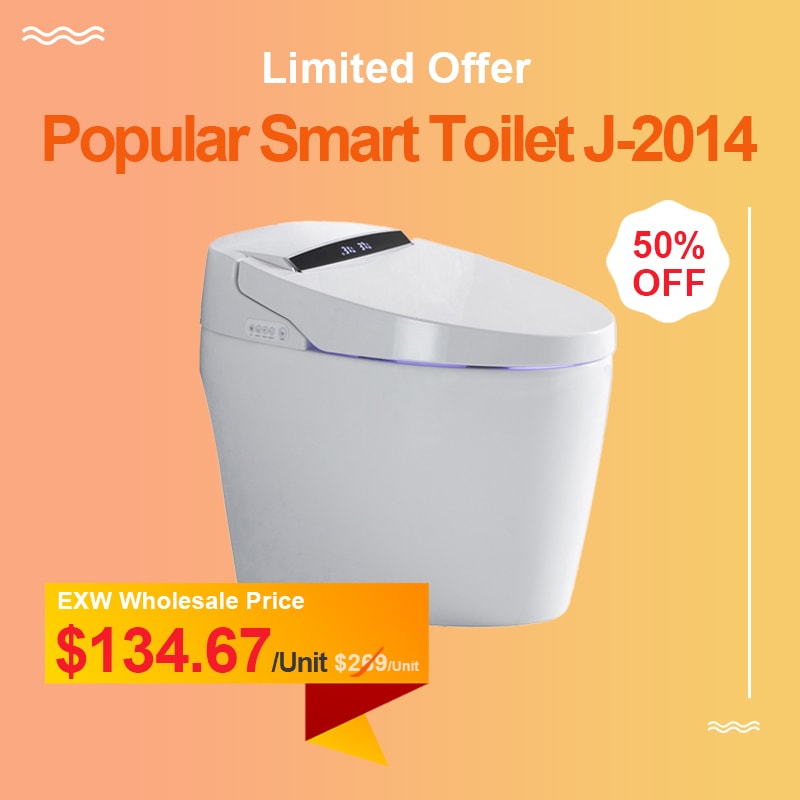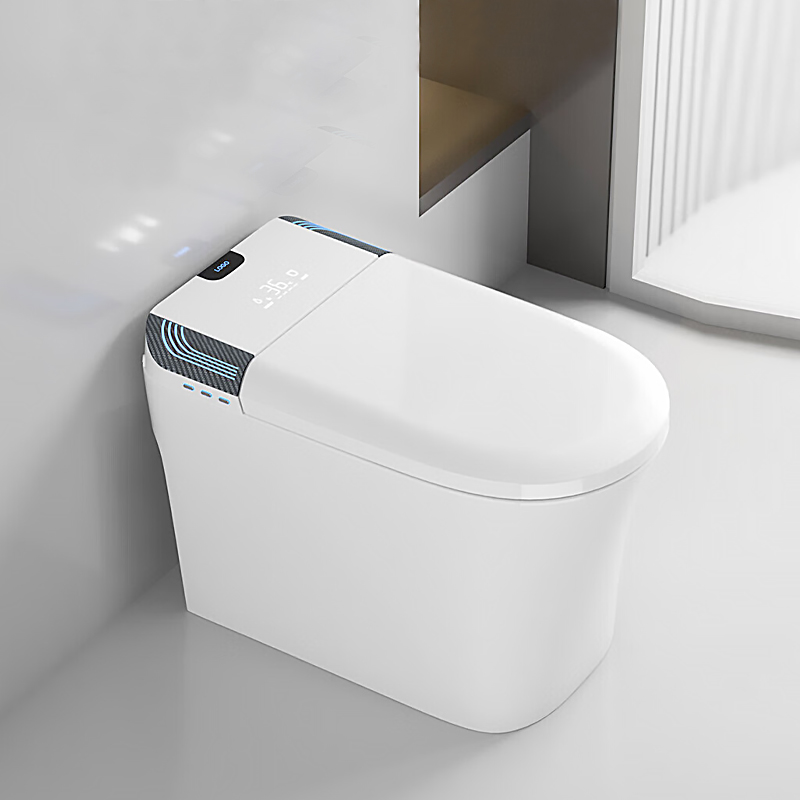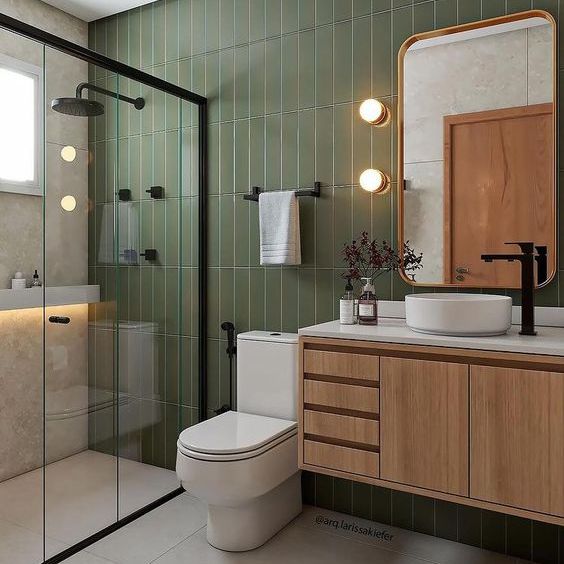 English
English
Jabra Sanitary is a sanitaryware supplier offering toilets, sinks, faucets, bathtubs, etc., at competitive prices. If you're a distributor, wholesaler, or project contractor, get a quote today!
 $23.9 Limited-time Offer
$23.9 Limited-time Offer Consignment Policy
Consignment Policy 20 Years of Experience
20 Years of Experience
Toilets are an essential part of modern living, yet most of us don't give much thought to the technology behind them.
The flush system is a crucial component that directly impacts a toilet's performance, water efficiency, maintenance needs, overall bathroom hygiene, and environmental footprint.
In this comprehensive guide, we'll delve into the various types of toilet flush systems, exploring their mechanics, pros and cons, installation considerations, and suitability for different settings.
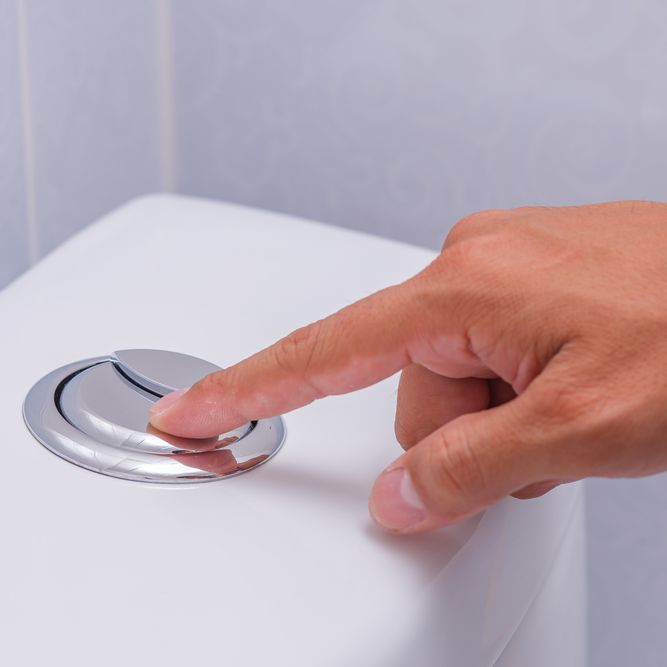
Table of Contents
Common Types of Toilet Flush Systems
Compare the Flush Efficiencies of Different Types of Toilet Flush Systems
Other Types of Toilet Flush Systems
What Makes a Toilet Have a Stronger Flush?
Which Type of Toilet Flush System Should You Choose?
Frequently Asked Questions
Conclusion
Toilets in homes generally fall into these categories: pressure-assisted, gravity flush, siphon flush, and dual flush.
Pressure-assisted toilets use pressure-assisted technology, while gravity flush toilets rely on gravity.
Modern advancements in toilet technology offer various flush systems tailored to user needs. Siphon flush technology enhances the flushing mechanism by creating a siphoning action to remove waste.
The dual flush system represents a significant advancement in toilet technology, giving users the option to choose between a full or a reduced flush.
Let's compare these toilet flush mechanism types and highlight their distinctions below.
Pressure-Assisted Flush System
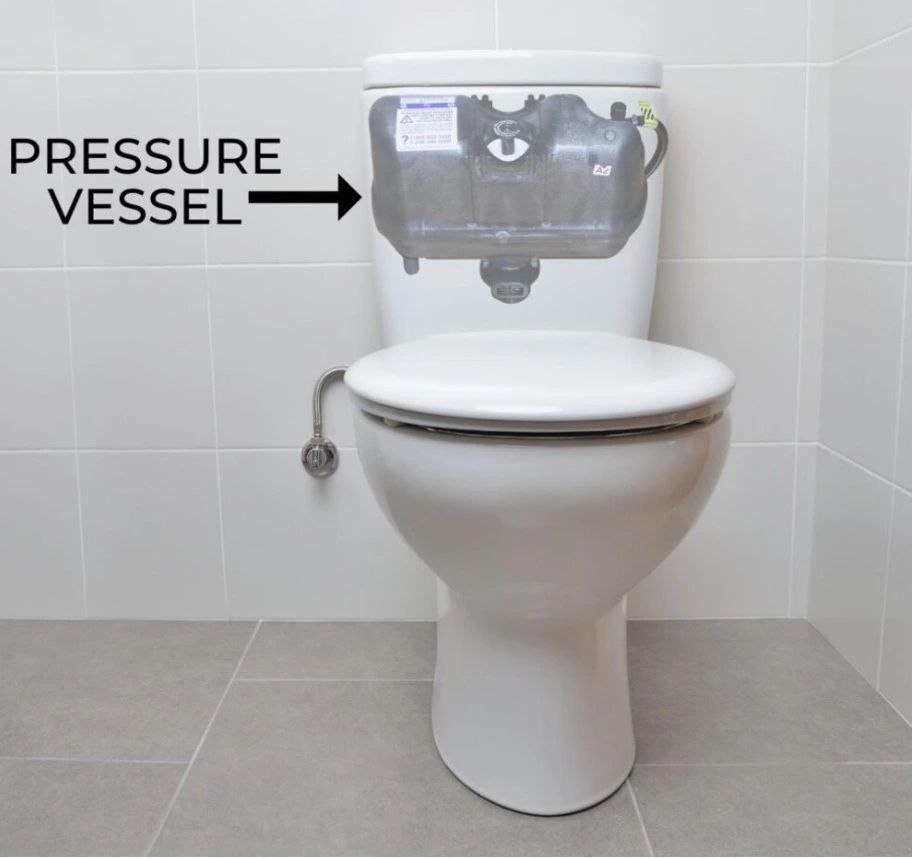
Overview:
Pressure-assisted flush systems are designed to provide a more powerful flush by using pressurized air to enhance the water flow.
How It Works:
Pressure-assisted toilets store water under pressure in a tank. It is a sealed tank that holds air.
When the flush lever is activated, the pressurized air forces water into the bowl at high speed, resulting in a powerful flush that significantly reduces the chance of clogs.
Pros and Cons of Pressure Assisted Flush Toilets
Pros:
- Powerful Flush: More effective at removing waste.
- Water Efficiency: Often uses less water per flush compared to traditional gravity-flush toilets.
- Reduced Clogging: The increased force helps prevent blockages.
Cons:
- Noise Level: Tends to be louder during flushing.
- Repair Complexity: The specialized components mean more potential points of failure and higher repair costs.
- Initial Cost: Generally more expensive to purchase and install.
Installation Considerations
- Plumbing Compatibility: This may require adjustments to existing plumbing to handle the pressurized tank.
- Space: Ensuring there is enough space for the pressurized tank is crucial.
- Professional Installation: Due to the complexity of the system, professional installation is recommended to ensure proper function and to mitigate the risk of mishaps.
Ideal For:
Commercial settings and high-traffic areas where efficient waste removal is essential. The pressure-assisted flush system will reduce clog incidents and conserve water.
Gravity Flush System
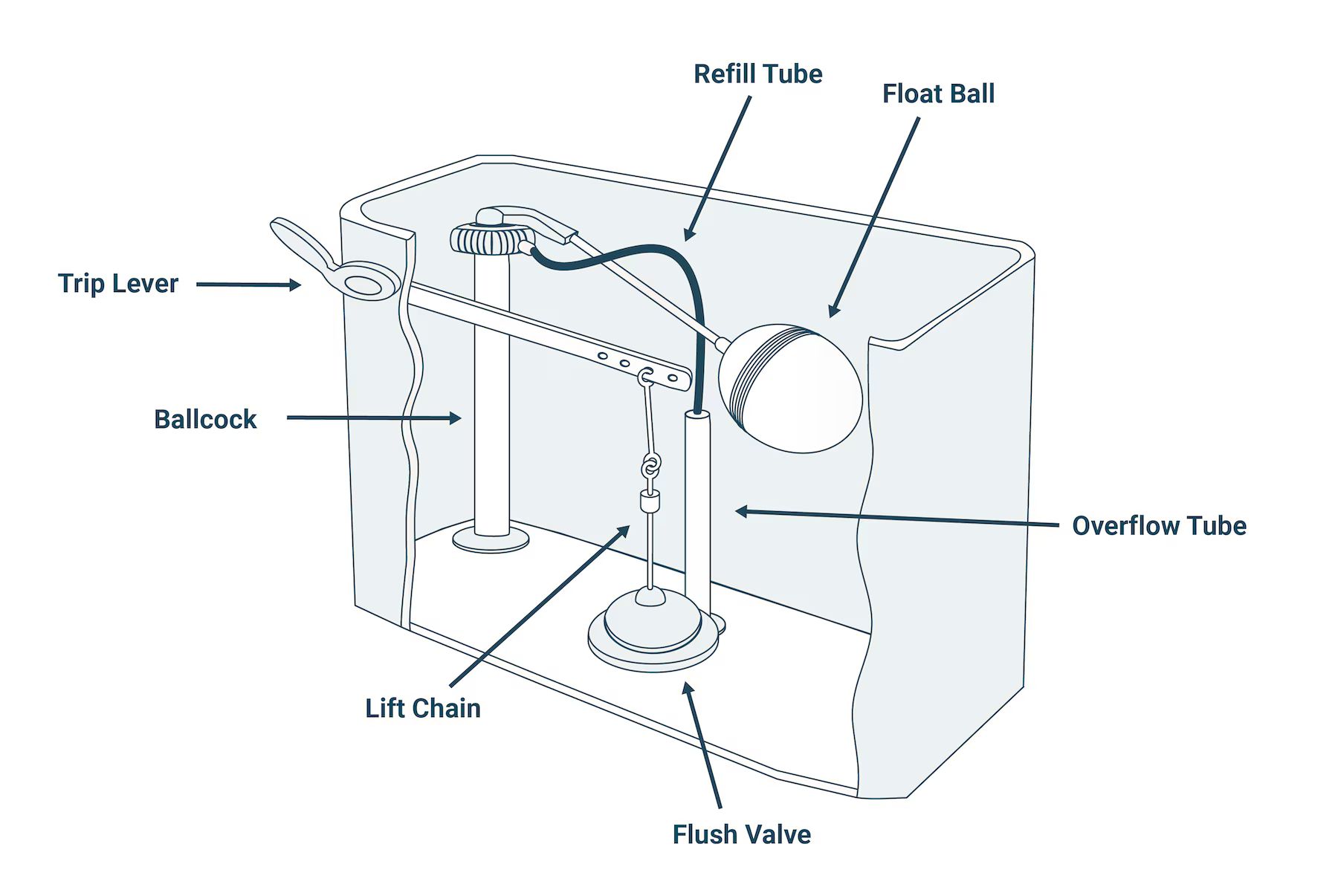
Overview:
Gravity flush systems are the most traditional and commonly used type of flush mechanism in toilets. They rely on gravity to create the necessary pressure for flushing waste.
How It Works:
When the flush lever is pressed, a flapper or valve opens, allowing water from the tank to flow into the bowl. As the water rushes in, it creates a siphon effect that helps clear the contents and pushes them into the sewage system.
Pros and Cons of Gravity Flush Toilets
Pros:
- Simplicity: Easy to repair and maintain due to fewer mechanical parts.
- Quiet Operation: Minimal noise during the flushing process.
- Cost-Effective: Generally less expensive to purchase and install.
Cons:
- Efficiency: May require more water per flush compared to other systems.
- Limited Flushing Power: This may require multiple flushes for solid waste.
- Clogs: This can be prone to clogs if the trap way design is not efficient.
Installation Considerations
When installing a gravity flush toilet, one should account for water supply pressure and the existing bathroom plumbing layout. They are generally more straightforward to install and don't require additional plumbing modifications that pressure-assisted systems might need.
It is crucial to check that the flapper and fill valve are compatible with local water conditions to ensure efficient operation.
Ideal For:
Residential homes and places where noise reduction and simplicity are priorities.
Siphon Flush System
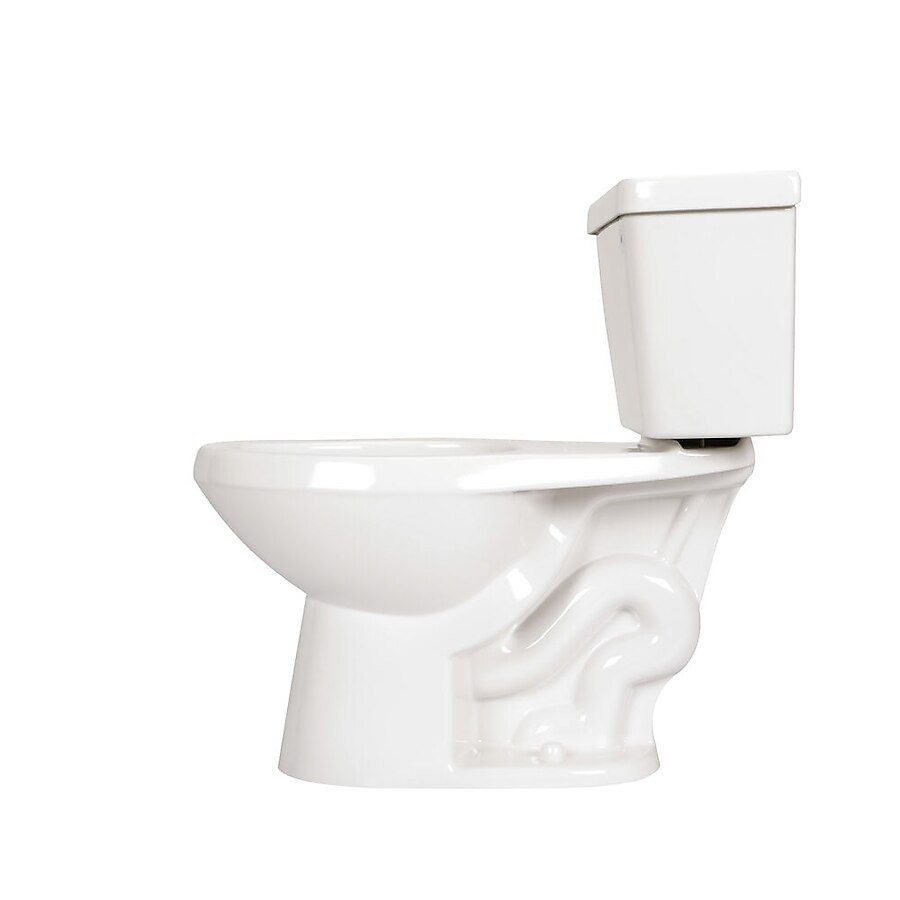
Overview:
Siphon flush systems utilize a siphonic action to create a powerful and efficient flush.
How It Works:
A siphon flush toilet relies on the principle of creating a vacuum to draw water and waste from the bowl into the sewer system.
When the flush lever is activated, water flows rapidly from the tank into the bowl, filling the siphon tube. This rapid filling creates a vacuum that pulls waste and water through the siphon tube and into the sewer line, aided by the siphoning effect.
Pros and Cons of Siphon Flush Toilets
Pros:
- Powerful Flush: The siphon action provides a strong and effective flush.
- Cleanliness: Efficiently cleans the bowl with minimal water.
- Reduced Clogging: The siphonic action helps prevent blockages.
- Water Efficiency: Siphon flush toilets are designed to use less water, with many models using between 1 to 1.6 gallons per flush.
- Quieter Operation: Typically, these toilets generate less noise compared to pressure-assisted systems.
Cons:
- Variable Flush Power: The flushing power is often less forceful than pressure-assisted systems, which may lead to clogs in some situations.
- Maintenance: Over time, the siphon mechanism can require maintenance to ensure proper functionality.
- Water Usage: Can use more water per flush compared to some modern systems.
- Complexity: More mechanical parts can lead to higher maintenance needs.
Installation Considerations
When installing a siphon flush toilet, one must consider the compatibility with existing plumbing. It is crucial to have an appropriate water supply line and drain configuration.
Additionally, the installation of a siphon jet toilet may be more complex than other types, which could impact installation time and cost.
Ideal For:
Residential homes where a powerful and efficient flush is desired.
Dual Flush System
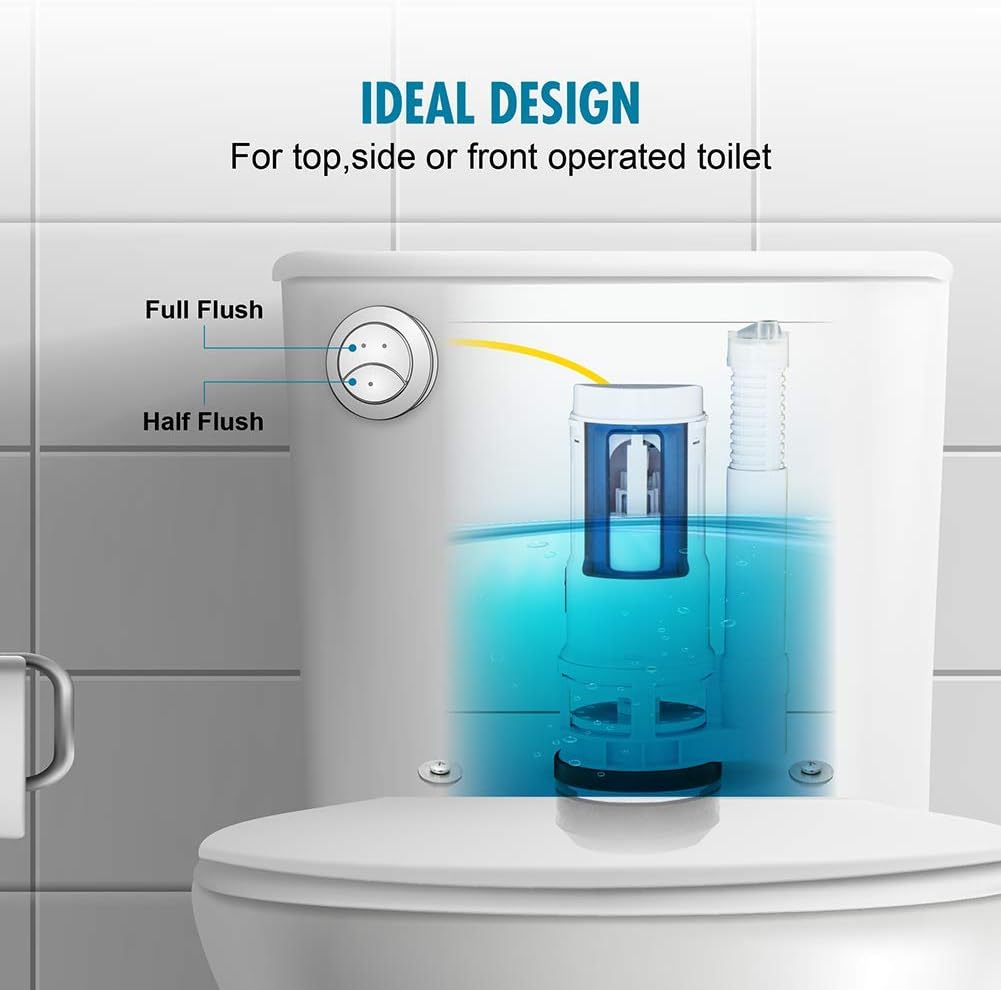
Overview:
Dual-flush systems offer two flushing options: a low-volume flush for liquid waste and a full-volume flush for solid waste, promoting water conservation.
How It Works:
The system typically features a split-button design on the tank lid, allowing users to choose between the two flush volumes.
One button releases less water for liquid waste, typically around 0.8 gallons per flush (gpf), whereas the other discharges more water for solid waste, around 1.6 gpf.
This system relies on a larger trap way and a wash-down flushing design, which minimizes clogs.
Pros and Cons of Dual Flush Toilets
Pros:
- Flexibility: Users can select the appropriate flush for the type of waste.
- Water Efficiency: Significant water savings over traditional toilets by using up to 67% less water for liquid waste.
- Cost-Effective: Lower water bills due to reduced water usage.
- Environmentally Friendly: Decreased water consumption translates to a lower environmental impact.
Cons:
- Behavioral Adjustment: Users must adapt to different flushing methods appropriately.
- Higher Initial Cost: Often more expensive upfront than single-flush
- Complexity: More mechanical parts can lead to higher maintenance needs.
Installation Considerations
- Compatibility: Check if the existing plumbing supports the dual flush system, as some older systems may not.
- Local Regulations: Verify compliance with local codes which could mandate water-saving fixtures.
- Professional Installation: Recommended, especially if modifications to plumbing are required.
Ideal For:
Eco-conscious households and regions with strict water conservation regulations.
Compare the Flush Efficiencies of Different Types of Toilet Flush Systems
Pressure-Assisted: Known for its power, the pressure-assisted system can handle a significant amount of waste with a single flush, thus it is often noted for greater efficiency in waste removal.
Gravity Flush: While not as powerful, it is more cost-effective and easier to maintain, suitable for residential use where dramatic flushing power is less of a necessity.
Siphon Flush: Balances noise and flushing capability, improving gravity flush systems without the noise level of the pressure-assisted system.
Dual Flush: This stands out for its water-saving potential, as it allows the choice between full and partial flushes, leading to significant savings on water bills over time.
Other Types of Toilet Flush Systems
Vacuum-Assisted Flush Systems
Overview:
Vacuum-assisted systems use a vacuum mechanism to enhance the flushing process, making it efficient and water-saving.
How It Works:
A vacuum mechanism creates a suction effect that helps pull waste from the bowl while the water flushes, reducing the amount of water needed.
Pros and Cons of Vacuum Assisted Toilet
Pros:
- Water Efficiency: Uses less water while maintaining effective waste removal.
- Quiet Operation: Generally quieter than pressure-assisted systems.
- Reduced Clogging: Effective in preventing blockages.
Cons:
- Complexity: More parts mean more potential maintenance issues.
- Cost: Higher installation and maintenance costs.
Installation Considerations
- Compatibility: Ensure the existing plumbing can support a vacuum-assisted system, as specialized plumbing is often necessary.
- Local Regulations: Check compliance with local codes, which may have specific requirements for vacuum-assisted systems.
- Professional Installation: Highly recommended due to the complexity and need for electrical connections and potential plumbing modifications.
Ideal For:
Modern homes and eco-friendly buildings where water conservation is a priority.
Washdown Flush Systems
Overview:
Washdown flush systems are commonly found in European toilets. They use a simpler design to achieve efficient waste removal.
How It Works:
When flushed, water rapidly fills the bowl and pushes the waste down into the trap way. The design often features a larger trap way to minimize clogs.
Pros and Cons of Wash Down Toilets
Pros:
- Simplicity: Fewer moving parts, leading to lower maintenance.
- Efficiency: Effective in waste removal with minimal water usage.
- Clog-Resistant: A larger trap way reduces the likelihood of clogs.
Cons:
- Noise: Can be louder than other systems.
- Splashing: The rapid water flow can cause splashing.
Installation Considerations
- Compatibility: Verify that standard plumbing fittings are sufficient for the washdown system.
- Local Regulations: Confirm adherence to local regulations regarding water efficiency and waste removal.
- Professional Installation: Generally simpler, but professional installation ensures proper alignment and efficient water flow.
Ideal For:
European homes and settings where simplicity and efficiency are valued.
Tornado Flush Systems
Overview:
Tornado flush systems represent a modern innovation, using a powerful swirling motion to clean the bowl thoroughly.
How It Works:
Instead of a single stream of water, multiple nozzles create a swirling effect that covers more surface area and ensures comprehensive cleaning.
Pros and Cons of Tornado Flush Toilets
Pros:
- Effective Cleaning: The swirling motion ensures better bowl coverage and cleaning.
- Water Efficiency: Uses less water compared to traditional flushes.
- Aesthetic Appeal: Sleek design with efficient functionality.
Cons:
- Cost: Higher initial investment.
- Availability: Less common, so parts and repair services may be harder to find.
Installation Considerations
- Compatibility: Ensure your plumbing system can maintain consistent and sufficient water pressure for the tornado effect.
- Local Regulations: Check local codes for any specific requirements related to advanced flushing mechanisms.
- Professional Installation: Recommended to optimize alignment and ensure the jets creating the tornado effect function correctly.
Ideal For:
Modern, high-end bathrooms focusing on cleanliness and efficiency.
Double-Cyclone Flush Systems
Overview:
Double-cyclone systems combine elements of gravity and pressure-assisted mechanisms to deliver a powerful and efficient flush.
How It Works:
Utilizes two nozzles positioned strategically to create a cyclonic action, enhancing the flushing power and reducing water usage.
Pros and Cons of Double Cyclone Flush Toilets
Pros:
- Powerful Flush: Efficient waste removal with less water.
- Quiet Operation: Quieter than pressure-assisted systems.
- Cleanliness: Ensures thorough cleaning of the bowl.
Cons:
- Cost: Higher cost for installation and parts.
- Complexity: More components can lead to higher maintenance needs.
Installation Considerations
- Compatibility: Verify that your plumbing can handle the higher water flow required by double-cyclone systems.
- Local Regulations: Ensure the system meets local water efficiency standards.
- Professional Installation: Recommended for proper alignment, sealing, and to prevent potential leaks.
Ideal For:
Luxury homes and environments prioritize both efficiency and cleanliness.
Tankless Flush Systems
Overview:
Tankless flush systems, often found in commercial settings, eliminate the need for a traditional water tank by connecting directly to the water supply.
How It Works:
These systems use a flushometer or similar mechanism to control water flow directly from the supply line, delivering a powerful and immediate flush.
Pros and Cons of Tankless Flush Toilets
Pros:
- Space-saving: No tank required, freeing up bathroom space.
- Powerful Flush: Direct water supply ensures a strong flush.
- Durability: Fewer parts that can wear out over time.
Cons:
- Cost: Higher initial installation cost.
- Water Pressure Dependence: Requires a consistent and high water pressure to function properly.
Installation Considerations
- Compatibility: Confirm your water supply can provide continuous and reliable pressure needed for tankless operation.
- Local Regulations: Check compliance with local codes regarding electrical connections and water-saving fixtures.
- Professional Installation: Essential due to the need for both electrical connections and reliable water supply integration.
Ideal For:
Commercial buildings and public restrooms where space and durability are critical.
Composting Flush Systems
Overview:
Composting toilets are an eco-friendly alternative designed to minimize water usage and convert waste into compost.
How It Works:
These systems separate liquid and solid waste, using aerobic decomposition to break down solid waste into compost over time.
Pros and Cons of Composting Flush Toilets
Pros:
- Water Conservation: Uses little to no water.
- Environmental Impact: Reduces sewage and waste processing demands.
- Self-Sufficiency: Ideal for off-grid locations.
Cons:
- Maintenance: Requires regular maintenance and compost management.
- Cost: Higher initial setup cost and ongoing maintenance.
Installation Considerations
- Compatibility: Ensure adequate space for the composting chamber, whether beneath or adjacent to the toilet.
- Local Regulations: Verify compliance with local regulations for composting systems, including waste management and odor control.
- Professional Installation: Recommended to properly install ventilation and any required electrical components.
Ideal For:
Off-grid homes, eco-friendly buildings, and areas with water scarcity.
What Makes a Toilet Have a Stronger Flush?
Below are the factors that contribute to the strength of a toilet's flush. By understanding these elements and making necessary adjustments or upgrades, you can ensure your toilet provides a strong, effective flush every time.
Home's Water Pressure
The water pressure in your home plays a significant role in the flushing strength of your toilet. Higher water pressure ensures that the tank fills up quickly and delivers a powerful surge of water when flushed.
If you experience weak flushing, it might be worthwhile to check your home's water pressure and ensure it meets the recommended levels.
Pressurized Flushing Systems
Toilets equipped with pressurized flushing systems consistently provide stronger flushes compared to gravity-fed models. These systems use air pressure to forcefully push water into the bowl, ensuring a more powerful and effective flush.
If you're looking to upgrade your toilet for better performance, considering a pressurized flushing system might be a wise choice.
Water Usage and Flushing Pressure
Contrary to common belief, using more water does not necessarily improve the flushing pressure. Modern toilets are designed to use water efficiently while still providing a strong flush.
The key is the design and mechanism of the flushing system rather than the volume of water used. Therefore, opting for high-efficiency toilets can provide both strong flushing power and water savings.
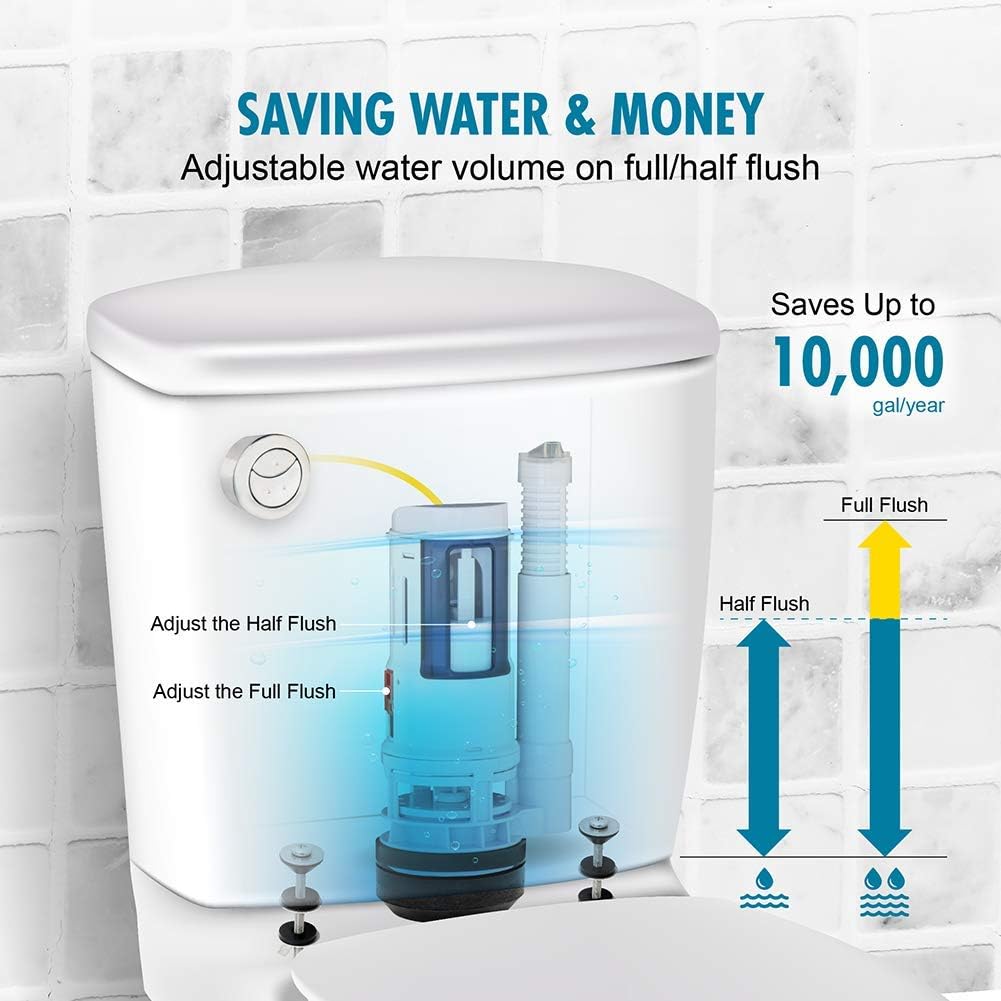
Adjusting the Float or Chain
Simple adjustments to the toilet's internal components, such as the float or chain, can enhance flushing efficiency. The float controls the water level in the tank, and ensuring it's set correctly can optimize the water available for each flush.
Similarly, adjusting the chain to ensure the flapper opens fully can improve the flow of water into the bowl, resulting in a more powerful flush.
Clean Toilets
A clean toilet naturally flushes with more strength. Mineral deposits and buildup within the bowl and tank can obstruct water flow and reduce flushing power.
Regular cleaning and maintenance prevent these issues, ensuring that your toilet operates at its best regardless of the flushing system used. Keeping the rim jets and siphon jet clean is particularly important for maintaining strong flushes.
Which Type of Toilet Flush System Should You Choose?
Choosing the right toilet flush system can significantly impact your bathroom experience, from the efficiency of each flush to the noise level and ease of maintenance.
Here are some factors to consider when deciding on the best toilet flush system for your needs.
Flushing Speed: Does your current toilet setup flush slower than two or three seconds?
If your toilet takes longer than two or three seconds to flush, it might be time to upgrade to a more efficient system. Consider the following types of flush systems based on flushing speed:
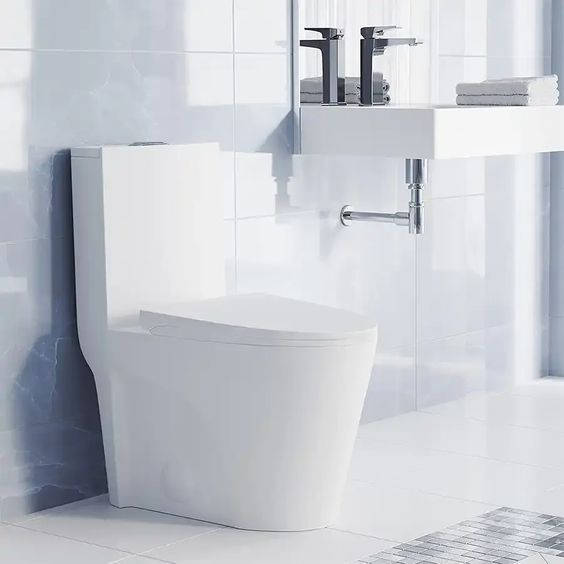
- Gravity Flush Systems: These are the most common and use the force of gravity to move water from the tank to the bowl. While generally effective, some models can be slower.
- Pressure-Assisted Systems: These use compressed air to deliver a powerful, quick flush. If speed is your priority, a pressure-assisted system might be the best choice.
Noise Output: Do you care about your toilet’s noise output?
The noise level of a toilet flush can be a crucial factor, especially in homes with shared walls or where bathrooms are near living spaces.
- Gravity Flush Systems: Typically quieter since they rely on gravity and simple mechanics.
- Pressure-Assisted Systems: These tend to be louder due to the pressurized air mechanism. If noise is a concern, you might want to avoid this option.
Flushing Systems: Single vs. Dual. Would you prefer single-flushing systems or dual-flushing systems?
- Single Flush Systems: Use the same amount of water for every flush. They are straightforward and easy to use but can be less water-efficient.
- Dual Flush Systems: Offer two flushing options—one for liquid waste (using less water) and one for solid waste (using more water). These systems can save a significant amount of water and reduce utility bills.
Bidet Integration: Will you add a bidet to your toilet?
If you plan to add a bidet, consider how it will integrate with your flush system. Some toilets with built-in bidets are designed to work seamlessly with specific flush systems.
- Integrated Bidet Systems: These smart toilets often come with advanced flushing mechanisms and controls that are designed to enhance user comfort and hygiene.
- Separate Bidet Add-Ons: Ensure that the existing toilet can accommodate the plumbing and space requirements for a bidet.
Cleaning and Maintenance: What is your toilet cleaning routine?
The ease of cleaning and maintaining your toilet can depend on the type of flush system you choose.
- Gravity Flush Systems: Generally easier to clean and maintain due to fewer moving parts and simpler design.
- Pressure-Assisted Systems: These can require more maintenance due to the complex mechanisms and need for regular checks on the pressurized components.
Frequently Asked Questions
This section answers common queries about various toilet flushing systems, catering to those contemplating upgrades or experiencing issues with their current setups.
How does a pressure-assist toilet differ from a gravity-flush toilet in terms of performance?
A pressure-assist toilet differs from a gravity-flush toilet primarily in flushing power; it uses pressurized air to force water into the bowl, which can effectively clear waste with a single flush.
Can you compare the water efficiency of dual-flush toilets against traditional single-flush systems?
Dual-flush toilets are often more water-efficient than traditional systems, offering a low-volume flush for liquid waste and a full flush for solids, which can significantly reduce overall water usage.
What factors should be considered when selecting the best toilet flushing system for a home?
When selecting a flushing system, it's essential to consider water efficiency, flushing power, noise levels, maintenance requirements, and system compatibility with existing plumbing.
In what scenarios would a siphon flush be more suitable than other flushing mechanisms?
A siphon flush, using water volume and gravity to create a vacuum and pull waste through the trapway, may be more suitable in residential settings where a quieter flush is preferred and lower pressure systems are adequate.
Conclusion
The choice of different types of toilet flush systems can significantly impact water usage, maintenance needs, and overall user satisfaction. From traditional gravity flush systems to advanced smart toilets, each type has its own set of advantages and drawbacks.
By understanding the mechanics and benefits of each system, homeowners and businesses can make informed decisions that align with their priorities, whether it be water conservation, powerful flushing, or modern convenience.
For those seeking a wide variety of choices, Jabra Sanitary, a good toilet bowl brand, provides an extensive selection of toilets featuring these flush systems, ensuring that there is a fitting option for every preference and requirement.
Keep in mind that each of these flush systems has unique installation considerations, from electrical connections and specialized plumbing to ensuring adequate space and regular maintenance.







